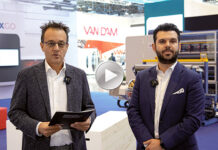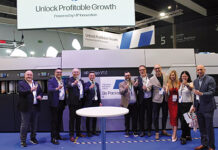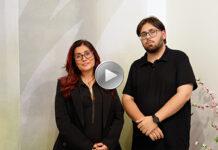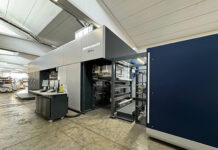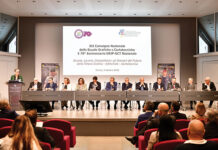From September 15 to 19, drinktec 2025 trade fair will take place in Munich, Germany. It is the world’s leading event for the beverage and liquid food industry. With exhibitors from around 60 countries, drinktec once again confirms itself as the only platform capable of comprehensively and globally showcasing all the sector’s solutions.
Thanks to the new format of the accompanying program Liquidrome, the organizers of drinktec aim to further enhance the event with increasingly valuable offerings. A dedicated information exchange area in Hall C4 will facilitate dialogue and interaction among researchers, visitors, and exhibitors. This format will be enriched with a networking area for visitors, designed to encourage the sharing of ideas and information, an invitation that is, of course, extended to exhibitors as well. Start-ups will play a prominent role within the Liquidrome.

One of drinktec’s most evident strengths is the opportunity to see the entire value chain in action. Nowhere else in the world can you witness the technical details of complete filling and packaging systems live.
Economic growth, health and nutrition trends, demographic shifts, and increasingly shorter product life cycles are shaping the development of the beverage and liquid food industry. This sector is particularly focused on food safety, quality, production processes, and sustainable packaging, all of which are being taken to the next level through the use of data and digital tools. Health trends, new recipes, functional ingredients, and the growing importance of proteins in beverages are opening up new business potential. drinktec 2025 will aim to provide answers to these emerging questions.
Three thematic areas
Today, tailored formulations are increasingly in demand to meet consumer needs, supported by new ingredients and innovative production processes such as protein manufacturing. drinktec is grouping these emerging trends within the framework of its accompanying program, under the main theme “Lifestyle and health.” Here, visitors will find a comprehensive overview of plant-based beverages.
Progress in the digitalization of business processes represents one of the sector’s key areas of focus. The central theme “Data2Value” is dedicated to this topic. In the future, the use of AI tools will unlock new application areas, as many functions along the value chain in the beverage and liquid food industry can benefit from deeper data integration. For instance, incorporating external data or using machine-learning-based forecasting tools will help identify broader relationships in product formulation, process technology, and plant operations.

Digitalization focuses on creating added value through data — by enhancing efficiency, product safety, and improving the availability, performance, and security of machinery and systems, while also increasing transparency across the entire production and packaging process.
AI facilitates real-time analysis of production data, detects anomalies, and helps reduce unplanned downtime. It offers greater possibilities for customizing and personalizing new flavors and functional ingredients. In cleaning processes, AI combined with machine learning can detect contamination levels and automatically adjust cleaning procedures. The simulation of production processes with the help of AI and digital twins is becoming increasingly important, especially because it supports complex investment decisions and provides greater investment security. In terms of service, apps and support systems have become vital components of value-added digital services.
Completing the triad of key topics is the thematic area “Circularity and resource management.” Sustainable products and production processes are of growing importance to consumers. For many beverage manufacturers, these criteria are now a fundamental part of their investment decisions: material recovery, efficient energy use, and innovative recycling solutions remain top priorities in their strategic planning.
A growing sector: global demand for machinery reaches record levels according to VDMA study
At the press conference for drinktec 2025, held in Milan last March, VDMA, German Engineering Federation, provided an overview of the global machinery trade, consumer trends in the beverage sector, and the key topics to be explored at drinktec 2025.
VDMA represents the largest group of exhibitors at drinktec and is the technical and conceptual partner of Yontex, the event’s organizer.
The food and beverage industry is among the most dynamically growing sectors worldwide. However, it is also marked by intense competition, pricing pressure, numerous innovations, and increasingly shorter product life cycles. The global trade volume of food processing and packaging machinery has been steadily growing for years, reaching €52.6 billion in 2023. The supply sector for food and beverage production and packaging is one of the largest segments in mechanical engineering and is significantly less affected by economic fluctuations than many other capital goods industries.

Europe is the most important region for sales of machinery in the food and packaging sector, accounting for 41% of the market. Asia follows with 19%, and North America ranks third with 18%. The Middle East/Africa region accounts for 10%, Latin America 9%, and Australia/Oceania 3%.
Italy (exports in 2023: €10.7 billion) and Germany (exports in 2023: €10.1 billion) have long ranked among the top 10 supplier countries and together represent over 40% of the global market share in the trade of food processing and packaging machinery. For Italian companies, the United States is the leading export market, followed by France and Germany. Although Italy is a global leader in the production of food processing and packaging machinery, it continues to import machinery as well.
Global sales volumes of soft drinks are expected to grow by 16%, reaching 972 billion liters by 2028. This growth follows a two-speed model: in mature markets, promising innovations are emerging in functional drinks and categories that blend health and enjoyment; in contrast, volume growth in emerging consumption markets is driven by greater accessibility and affordability, with a focus on local tastes and economic conditions.
According to VDMA, the global increase in the consumption of both non-alcoholic and alcoholic beverages will lead to further investments in machinery and plant technology to support development and expand production capacities.
What and how much people drink in Italy
Italy is one of the largest non-alcoholic beverage markets in Europe, with 15.7 billion liters consumed. Bottled water dominates with a 76% share, followed by carbonated soft drinks at 2.4 billion liters, representing 15% of total consumption. Fruit juices and RTD (ready-to-drink) beverages account for only 4% of total consumption. As for alcoholic beverages, Italy consumed a total of 4.2 billion liters in 2024. Italian consumers are showing a growing appreciation for craft beers, a trend reflected in the increasing number of breweries across the country.





